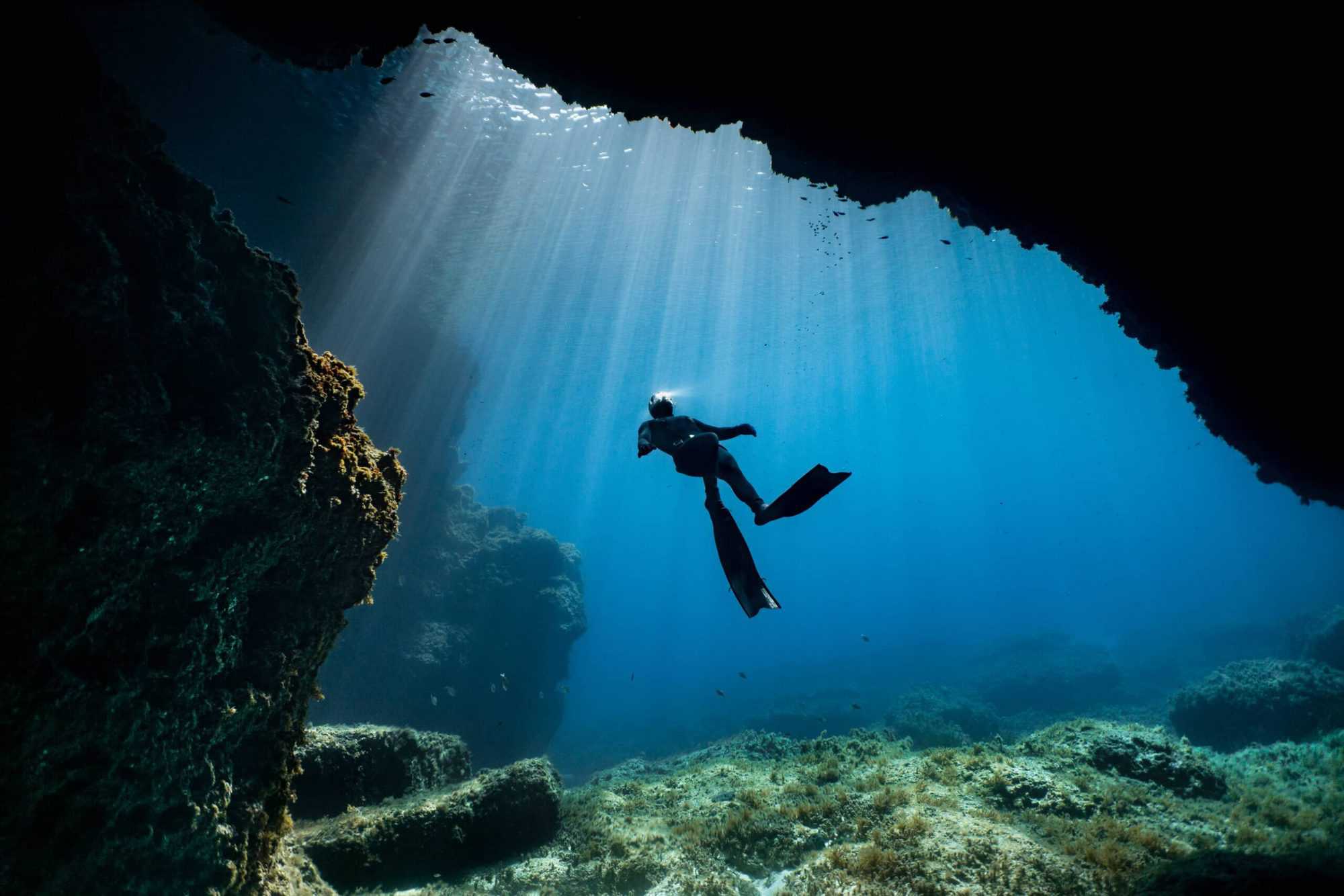A simple explanation on how humans are able to extend their breath hold time, enabling us to dive without the aid of Breathing Apparatus (BA). Before we start, I suggest you read this.
There are a couple of things you need to understand; oxygen (o2), Carbon Dioxide (Co2) and relaxation.
Oxygen (o2) and Carbon Dioxide (Co2) – The two main gases we deal with.
The air we breathe contains 21% oxygen and 79% nitrogen. Oxygen is stored in the myoglobin in our muscles and bonded to haemoglobin in our blood. When we are at rest our blood saturation (which is the concentration of oxygen in our blood) would be at around 97-99%. So as of now, whilst reading this, your blood is most likely fully saturated. It is then up to us to properly fill our lungs to their maximum carrying capacity.
Carbon dioxide is waste that is produced when carbon is combined with oxygen as part of the body’s energy-making processes. As air enters the lungs and oxygen is diffused into the blood, carbon dioxide is expelled in the air we breathe out. The less active we are the less carbon dioxide our body produces; and on the contrary the more active we are the more waste our body will produce.
For example; When we sprint we are using explosive power and a large majority of our muscles. In turn, carbon dioxide builds up fast and our breathing changes! We automatically breathe deeper and heavier to expel the carbon dioxide.
It is the Co2 which triggers the urge to breathe when holding our breath and we refer this ‘urge to breathe’ as contractions.
Relaxation – One of those buzz words in freediving and it’s extremely important that both our body and mind are relaxed. Take a look at how it’s done from our write up on the The Breathe up.
HOW WE DO IT
- We perform the breathe upwhich takes around 2-3 minutes – helping us relax the body and mind
- Once we are relaxed both mentally and physically, we perform the 3 part breath and hold. This 3 part breath ensures we properly fill our lungs to their maximum carrying capacity
- Remember, our blood at this point is fully saturated with oxygen (between 97-99%)
- During the breath-hold there are a number of relaxation techniques and mind tricks that one can use which are all thought in the courses
- As time passes, these levels of o2 start decreasing whilst the Co2 gasses start increasing
- This is because we are not breathing in air to re-oxygenate our blood with o2, nor are we expelling any air to rid of the Co2
- At some point during the breath hold the body experiences ‘the urge to brethe’. This is because of the rising Co2. The contractions come in the form of swallowing, heat around the chest or the diaphram contracting – and it’s ok!
- You actually still have a long way to go and plenty of oxygen left. It’s just a matter of how you deal with the contractions and this is where relaxation and mind tricks come into play.
- Obviously, if you keep holding for long periods of time you will reach very low levels of o2 and eventually black out (and this is where buddying and safety comes in)
- Don’t worry, when you enrol in a course it teaches you to know your limits, safety procedures and to always dive with a buddy.
HOW DOES BEING MORE RELAXED HELP?
- Carbon Dioxide builds up a lot slower – you will experience the urge to breathe at a later time during your breath hold
- Oxygen drops slower – just like Co2 the more relaxed we are the slower the levels of o2 will drop.
- The ‘urge to breathe’ or these ‘contractions’ will be a lot more comforting.
Fun freediving fact: Most individuals, with a little training are able to hold their breath between 4-5 minutes in around 1 – 1.5 months.
